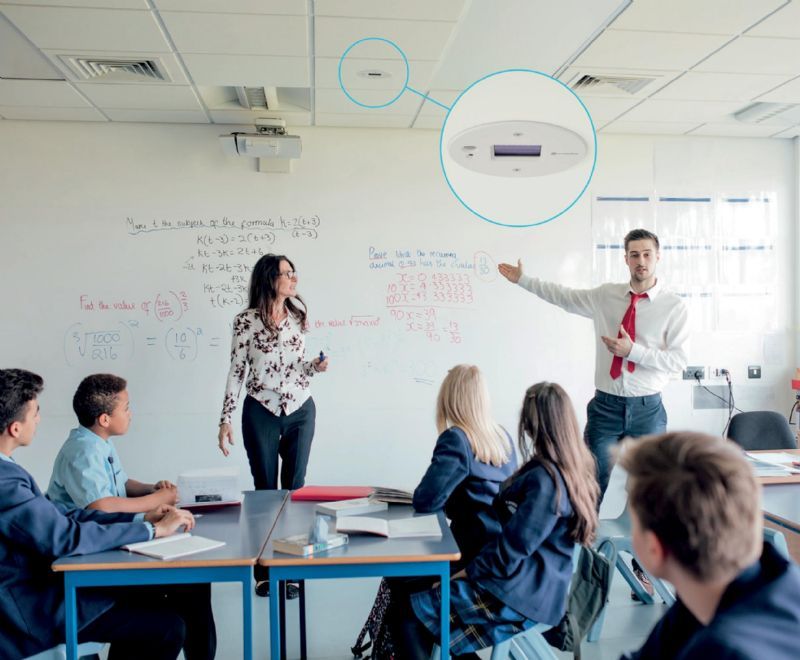 Written by Rod W. Lekey, RN, DCS
Written by Rod W. Lekey, RN, DCS
UV light is present all around us, so how do you know what type of UV light you’re dealing with?
In this article, we'll explore the different types of UV light and what sets them apart - from the UV-A rays that make up the majority of the sun's UV radiation, to the more powerful UV-B and UV-C rays that are used in everything from medical sterilization to air purification. Whether you're a medical professional, a business owner, or just someone interested in learning more about this fascinating technology, this guide will provide you with the knowledge you need to make informed decisions about UV light!
---------------------------------------------------------------------------------
---------------------------------------------------------------------------------
The only natural source of ultraviolet (UV) radiation is from the sun. UV radiation is a form of electromagnetic radiation with wavelengths shorter than those of visible light. UV radiation is divided into three types: UV-A, UV-B, and UV-C. UV-A has the longest wavelength and is the least harmful to living organisms, as it penetrates the skin deeply and causes tanning. UV-B has a shorter wavelength and can cause sunburn and skin cancer, but it is also necessary for the production of vitamin D. UV-C has the shortest wavelength and is the most harmful to living organisms, but it is absorbed by the atmosphere and does not reach the earth's surface.
.png)
Artificial UV-A, UV-B, and UV-C light are important for a variety of applications. UV-A light is used in blacklights for the detection of fluorescent materials, as well as for tanning beds and phototherapy for some skin conditions. UV-B light is used for the production of vitamin D in humans, as well as for phototherapy for certain skin conditions such as psoriasis, and is the main cause of skin cancer. UV-C light, while not naturally occurring on Earth due to its absorption by the atmosphere, can be produced artificially and is used for disinfection purposes, such as in water treatment, air purification, and sterilization of surfaces and medical equipment.

Natural: UV-A light, with wavelengths between 320-400 nm, accounts for approximately 95% of the UV radiation that reaches the Earth's surface. It penetrates deeper into the skin than UV-B light and is the primary cause of skin aging and DNA damage. UV-A rays are present throughout the day and can even penetrate glass and clouds.
Artificial: Artificial UV-A light has various practical applications, like inducing fluorescence in certain materials, detecting leaks, and verifying the authenticity of documents. Artificial UV-A light replicates these useful properties of natural UV-A light while allowing for controlled exposure and application-specific uses.

Natural: UV-B light has wavelengths between 280-320 nm and is partially absorbed by the Earth's atmosphere. Though it represents a small percentage of UV radiation reaching the Earth's surface, UV-B is more biologically active than UV-A. It is the primary cause of sunburn and skin reddening, and it plays a significant role in the development of skin cancer.
Artificial: Artificial UV-B light is helpful in various applications due to its ability to mimic some of the beneficial effects of natural sunlight in a safe capacity.

Natural: UV-C light has the shortest wavelengths, between 100-280 nm, and is the most dangerous type of UV radiation to living beings. Fortunately, UV-C is almost entirely absorbed by the Earth's atmosphere, protecting us from its harmful effects. However, natural UV-C light plays a critical role in protecting life on Earth. By being absorbed in the ozone layer, it contributes to the formation and maintenance of a protective shield that filters out other harmful UV radiation.
Artificial: Artificial UV-C light has emerged as a powerful tool in various applications due to its germicidal properties. This short-wavelength ultraviolet radiation possesses the ability to inactivate a wide range of microorganisms, including bacteria, viruses, molds, and fungi, by disrupting their genetic material. Furthermore, recent advancements in UV-C technology have led to the development of far-UV-C light, which is capable of decontaminating surfaces and air without posing significant harm to human skin or eyes. Check out all of our UV Disinfection Devices for sale.

From tanning beds to water purification systems, ultraviolet (UV) light can be an incredibly versatile and useful technology. However, not all UV light is created equal.
Understanding the differences between UV-A, UV-B, and UV-C light is crucial for recognizing their distinct properties, potential risks, and applications. While all three types of UV light have specific uses, it is essential to take appropriate precautions when dealing with these powerful forms of radiation.
Learn more by reading our UV Disinfection articles that will help you understand more about this fascinating tech!
Be sure to check out our UV Disinfection Devices for sale!
Thanks for reading.

Rod is a registered nurse with previous clinical experience as an EMT-B, hospice provider, and emergency room nurse. He now works as an operating room nurse at a Level I Trauma Center and research hospital, where sanitization and environmental control are absolutely crucial to positive patient outcomes. He spent over 30 years in the military and aerospace industry and holds a doctorate in computer science. He is fascinated with exponential technologies and passionate about their impact on society and culture, with interests in improving healthspan, espousing positive aging, practicing holistic wellness, and increasing functional fitness.